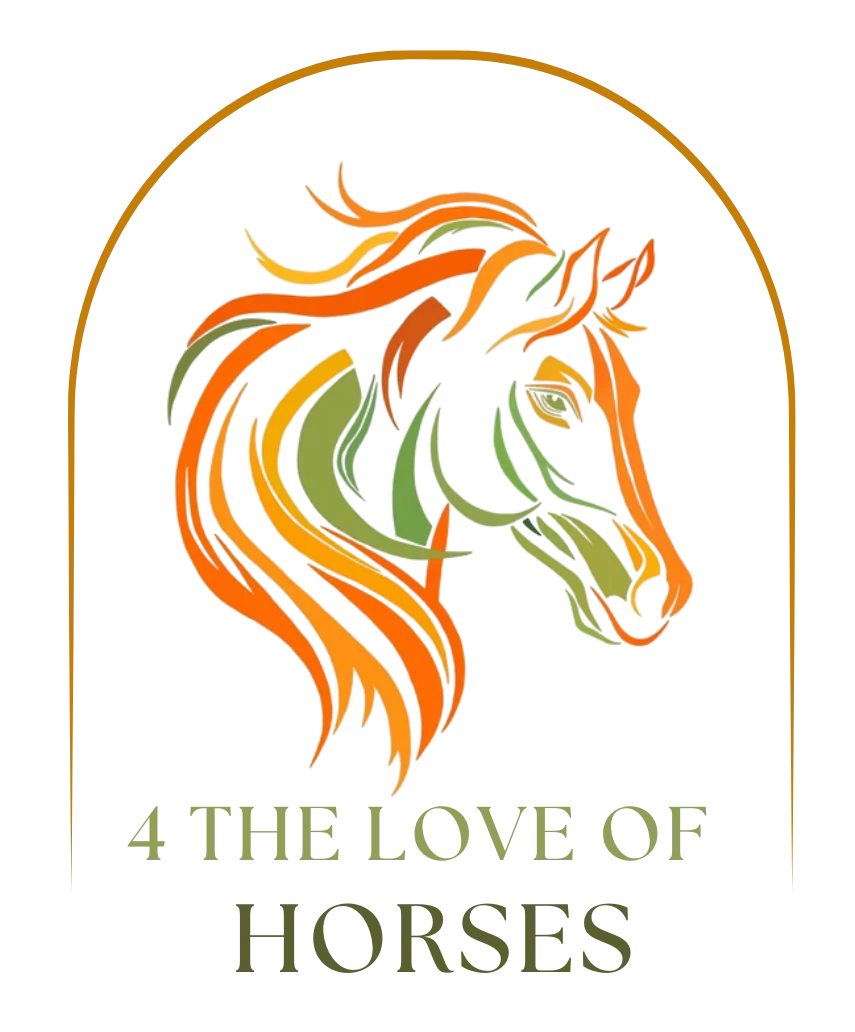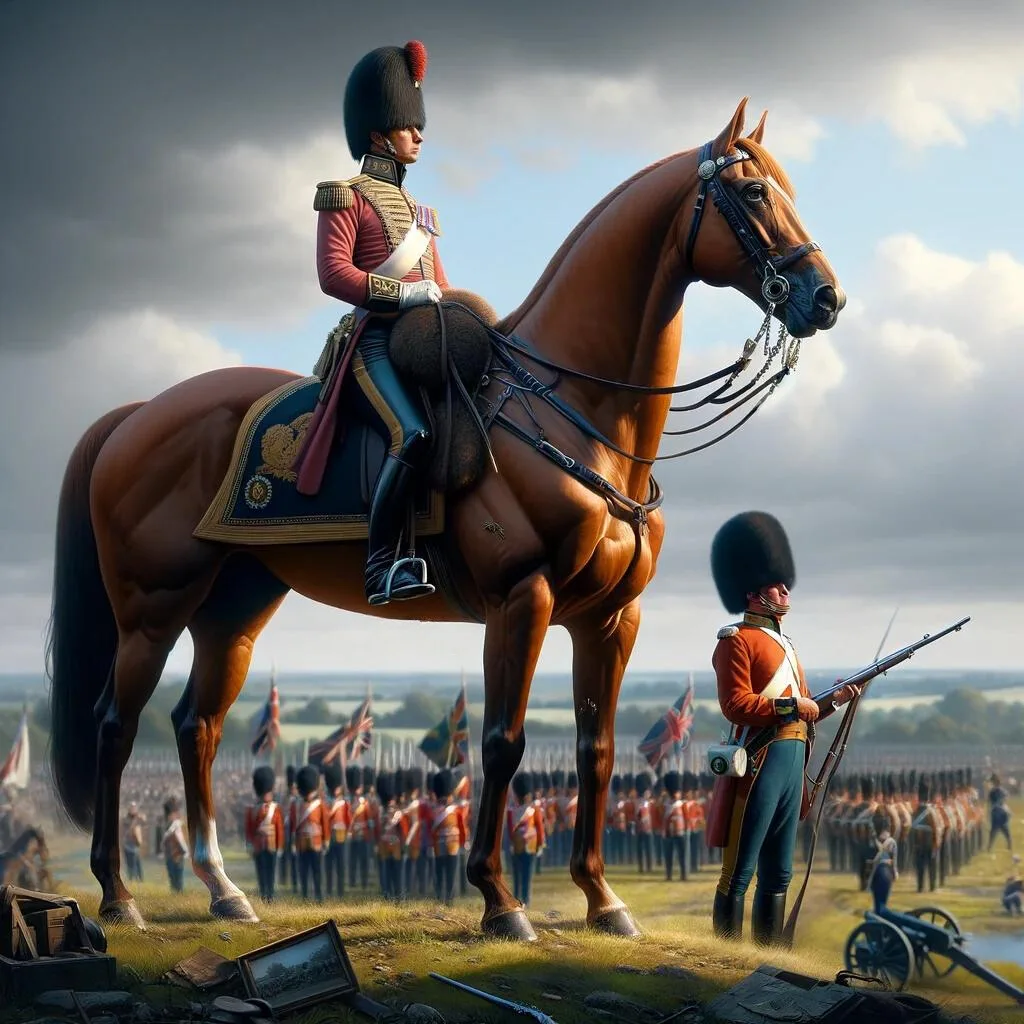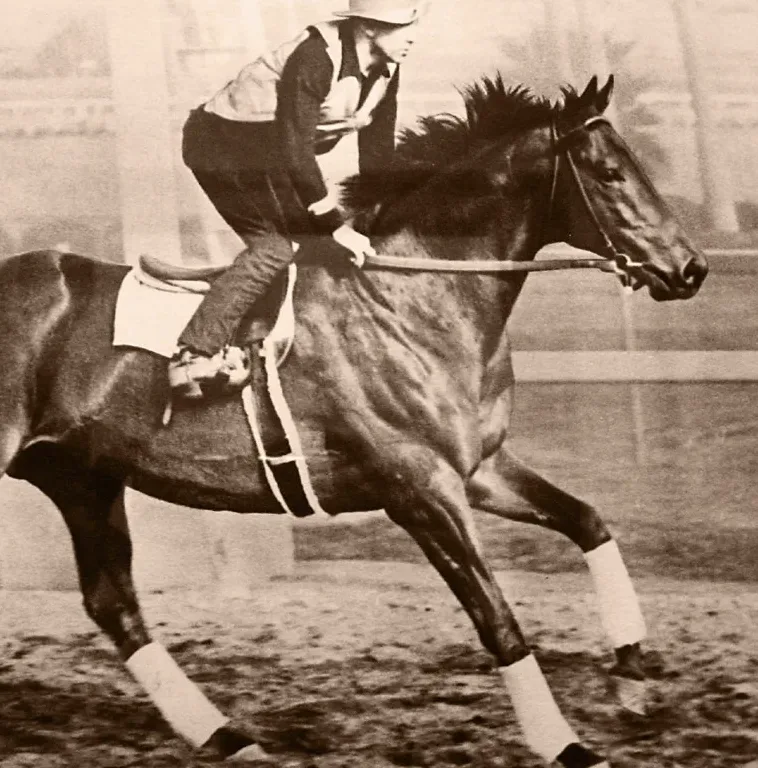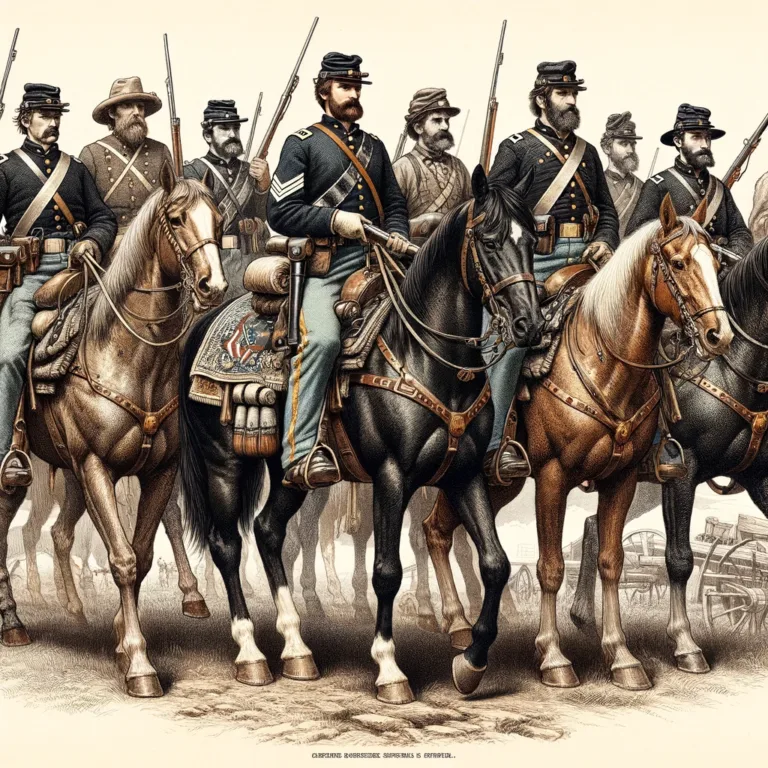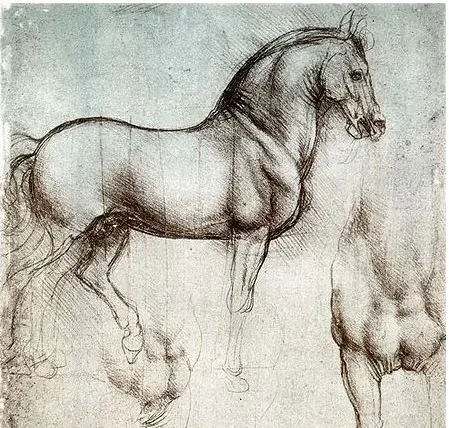In the Saddle of History: Wellington and Copenhagen at Waterloo
Copenhagen, a chestnut stallion born of esteemed Arabian and Thoroughbred lineage, was not merely a witness to the Duke of Wellington’s triumph at Waterloo; he was a remarkable figure whose tale extends far beyond the battlefield.
His origins trace back to his dam, Lady Catherine, a valiant war horse who carried her rider through the tumultuous Battle of Copenhagen in 1807. Little did anyone know that amidst the chaos of battle, Lady Catherine bore within her the seed of a future legend. Copenhagen, named in honor of the battle where his story began, emerged into the world in 1808, a testament to the resilience and fortitude of his lineage.
With a lineage boasting the bloodlines of Eclipse, the Godolphin Arabian, and the Darley Arabian, Copenhagen embodied the finest qualities of his ancestors. Though his racing career was brief and unremarkable, standing at just 15.1 hands high, he possessed a strength and hardiness attributed to his half-Arabian heritage.
The Duke of Wellington recognized Copenhagen’s potential, acquiring him after an initial stint under Sir Charles Stewart’s command. Despite his reputation as a challenging horse, Copenhagen found in Wellington a master capable of unlocking his full potential. Under Wellington’s guidance, Copenhagen thrived, honing his skills through daily exercise and participation in hunting expeditions.
Their partnership would be tested on the fields of battle, where Copenhagen’s endurance and resilience proved invaluable. At Waterloo, he carried the Duke for seventeen hours, steadfast and unwavering in the face of adversity. Legend has it that after the battle, Copenhagen aimed a playful “threat” at Wellington, a testament to their unique bond.
Their triumphs continued long after the Napoleonic Wars, with Copenhagen remaining by Wellington’s side as a hunting companion and beloved steed. Adored by admirers and ladies of society alike, Copenhagen lived out his days in comfort and luxury, basking in the affection lavished upon him.
Upon his retirement in 1828, Copenhagen continued to receive the finest care until his passing in 1836 at the age of 28. Though deaf and blind, his legacy endured, a testament to the enduring bond between man and horse and the indomitable spirit that transcends time and space. Copenhagen’s story serves as a timeless reminder of the power of loyalty, courage, and companionship, echoing through the annals of history as a symbol of valor and resilience for generations to come.
Early Life and Training
Copenhagen’s journey began in 1808, on the lush pastures of England, a land renowned for its exceptional horse breeding. His entry into the world was marked by the legacy of his lineage. His sire, Meteor, was a noteworthy descendant of Eclipse, a horse whose name resonates in the annals of racing history for unparalleled speed and stamina. Eclipse’s bloodline was a guarantee of equestrian excellence, a promise that Copenhagen inherited effortlessly.
Copenhagen’s early years were shaped by the nurturing hands of experienced horsemen. From a tender age, he exhibited signs of the greatness that lay within him. He possessed a spirited nature, a hallmark of his illustrious pedigree. His coat, a rich chestnut hue, gleamed in the sunlight, and his movements bore the grace and power that were the gifts of his ancestors.
His initial training, typical for thoroughbreds of his time, was aimed at preparing him for the racecourse. Copenhagen was introduced to the rigors of the racetrack, a world where speed, agility, and endurance were paramount. During this period, he developed not only physical strength but also a mental acuity, learning to respond to the subtle cues of his riders and trainers. While his racing career was not distinguished by remarkable victories, it provided a foundation of discipline and resilience that would serve him well in his later years.

As Copenhagen grew, so did his robustness and vigor. He was not a horse that would fade into the background; he demanded attention, not just for his striking appearance but for his palpable presence. It was this combination of physical prowess, mental sharpness, and an undeniable spirit that prepared Copenhagen for a destiny far greater than the racecourse. He was being molded, unknowingly, for a role that would see him gallop into the pages of history, alongside a military leader whose name would become synonymous with victory and strategy.
In our next section, we will explore how Copenhagen’s path crossed with that of the Duke of Wellington, marking the beginning of a partnership that would become legendary in the annals of military history.
Copenhagen and the Duke of Wellington
In the tapestry of Copenhagen’s life, a pivotal thread was his association with Arthur Wellesley, the Duke of Wellington. Wellington, a figure etched in history for his military acumen and leadership, was as discerning in his choice of horses as he was in his battle strategies. Known for his calm demeanor under pressure and an eye for detail, Wellington understood that a reliable horse was not just an asset but a necessity in the chaos of war.
Copenhagen came into Wellington’s life at a crucial time. After his moderate success on the racetracks, Copenhagen was no longer just a horse bred for racing; he was a seasoned animal, ready for greater challenges. Wellington, seeking a horse that could endure the rigors of war, saw in Copenhagen the qualities essential for a military mount. It was in 1813, just two years before the defining Battle of Waterloo, that Copenhagen was chosen to be the Duke’s warhorse.
What made Copenhagen a suitable horse for a military leader like Wellington was a blend of physical attributes and temperament. Physically, Copenhagen was a robust horse, with a strong back and sturdy legs, essential for carrying a rider and equipment over long distances. His chestnut coat was not just striking but also in excellent condition, reflecting his good health and vigor.
However, it was Copenhagen’s temperament that truly set him apart. Despite his spirited nature, he possessed an exceptional level of calmness under pressure, a trait invaluable in the tumult of battle. He was responsive and obedient, able to interpret and react to Wellington’s commands swiftly. Moreover, Copenhagen had an extraordinary level of endurance, capable of remaining active and alert for extended periods, a critical attribute for long, grueling campaigns.
In the next section, we will delve into Copenhagen’s most famous moment – his role in the Battle of Waterloo, where he proved not just his physical capabilities but also his unwavering loyalty and bravery, traits that cemented his place in history alongside the Duke of Wellington.

Copenhagen in the Battle of Waterloo
The Battle of Waterloo, fought on June 18, 1815, stands as one of the most significant chapters in European history, and it was here that Copenhagen truly became a legend. Under the Duke of Wellington, Copenhagen was not just a bystander but an active participant in this monumental clash.
From the early hours of that fateful day, Copenhagen carried Wellington across the battlefield, traversing muddy fields, steep slopes, and the tumultuous sounds of cannon fire and musket shots. His role was crucial; he was the Duke’s vantage point, his mobility, and in many ways, his lifeline amidst the chaos of war. Copenhagen’s endurance was put to the ultimate test as the battle raged for more than eight grueling hours.
Despite the noise, the confusion, and the danger, Copenhagen remained steadfast. His calmness under fire was remarkable, a testament to both his training and his natural disposition. He displayed an extraordinary level of bravery, unfazed by the chaos and destruction that unfolded around him. This resilience allowed Wellington to lead effectively, to be present where he was needed the most, directing troops, strategizing, and altering the course of the battle.
Wellington and Copenhagen moved together as a unit, with Copenhagen responding intuitively to the Duke’s commands, whether it was a quick gallop to a critical point or a steady pace amidst the infantry. His ability to maintain stamina and composure throughout the day was nothing short of extraordinary. Even as the battle wore on and fatigue set in, Copenhagen’s spirit never waned, embodying the very essence of courage and determination.
The Battle of Waterloo was a decisive victory for the Allied forces, and while the brilliance of military strategy played its part, the role of Copenhagen cannot be understated. He was more than a horse; he was a symbol of the unwavering spirit and resilience needed in times of great adversity.
In the next section, we will explore Copenhagen’s life post-Waterloo, his retirement, and how he was honored for his service, reflecting the deep bond and respect he shared with the Duke of Wellington.

Life after Waterloo
After the smoke of the Battle of Waterloo cleared and the annals of history were marked with its outcome, Copenhagen’s life took a well-deserved turn towards peace and tranquility. His service in the battle had not only demonstrated his bravery but also solidified his bond with the Duke of Wellington, a bond that would ensure him a life of comfort and reverence in his later years.
Copenhagen retired to the Duke’s estate, where he was treated not just as a retired warhorse, but as a cherished companion. The Duke, recognizing the depth of Copenhagen’s service, ensured that his remaining years were spent in comfort. He roamed the lush pastures, a stark contrast to the battlefields he had once traversed. Copenhagen was given the highest level of care, with attentive grooms and a diet befitting his status and age.
One notable anecdote from this period highlights the special relationship between Copenhagen and the Duke. It is said that Wellington would often visit Copenhagen in the paddock, spending time with him, feeding him treats, and reminiscing about their time together. This was not just a duty for Wellington but a genuine display of affection and gratitude towards his faithful companion.
Copenhagen’s fame as the Duke’s horse did not wane in retirement. Visitors to the estate would often ask to see him, and he was featured in various paintings and descriptions, immortalizing his role in history. His legacy was not just as a warhorse but as a symbol of the enduring partnership between horse and rider.
Sadly, Copenhagen passed away in 1836 at the age of 28. His passing was marked with genuine mourning, not just by the Duke but by those who knew of his exploits. In a fitting tribute to his service, Copenhagen was buried with full military honors, a rare accolade for a horse. His grave, marked with an inscribed stone, remains a testament to his impact and the respect he garnered.
In the final section, we will reflect on Copenhagen’s legacy, how he is remembered, and what he symbolizes in the broader narrative of military horses and their invaluable contributions to history.
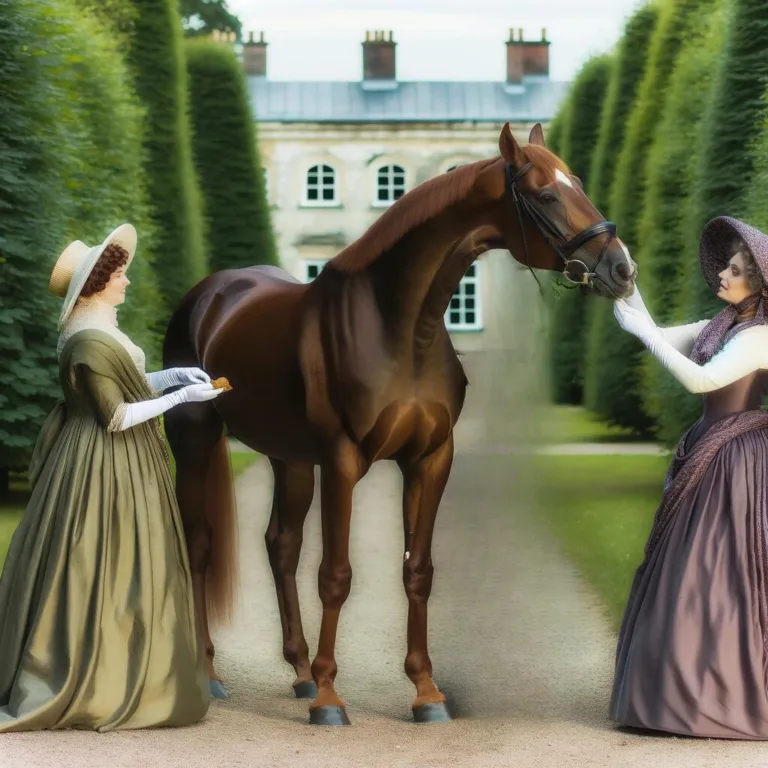
Legacy and Memory
Copenhagen’s legacy extends far beyond his years on the battlefield and in the peaceful pastures of retirement. His memory is enshrined not only in the annals of military history but also in the cultural fabric that commemorates the valiant contributions of war horses.
One of the most tangible aspects of Copenhagen’s legacy is the memorials and artistic representations that celebrate his life. Paintings and illustrations of Copenhagen, often alongside the Duke of Wellington, are found in numerous historical collections, capturing the noble stature and spirit of this remarkable horse. These artworks serve as a window into the past, allowing generations to glimpse the bond between Copenhagen and the Duke, a partnership that played a pivotal role in shaping European history.
Copenhagen’s story and his connection with Wellington have also found their way into literature, with mentions in books and historical accounts. These narratives not only chronicle his life but also reflect on the broader significance of horses in military campaigns. Copenhagen is often portrayed as a symbol of bravery, loyalty, and the unbreakable bond between horse and rider.
In the context of military horses, Copenhagen stands as a symbol of the crucial role these animals have played throughout history. He represents the thousands of horses that have served alongside soldiers, often in challenging and perilous conditions. His story is a reminder of the resilience, endurance, and courage that these horses exhibited, qualities that were indispensable in times of conflict.
Moreover, Copenhagen’s story highlights the respect and care that these noble creatures deserve, both in service and retirement. His dignified treatment post-Waterloo sets a precedent for how war horses should be honored for their contributions. Copenhagen’s life, therefore, is not just a tale of a horse’s bravery in battle but also a narrative about the deep connections formed between humans and horses, and the enduring respect and gratitude owed to these loyal companions.
As we reflect on Copenhagen’s legacy, we are reminded of the significant yet often unspoken role of horses in shaping our history. Their contributions, epitomized by the likes of Copenhagen, continue to resonate, reminding us of the profound bonds we share with these magnificent creatures.
Conclusion
The tale of Copenhagen is not just a story of a horse but a narrative woven into the very fabric of our history. His life, from the racing fields of England to the battlegrounds of Waterloo, epitomizes the strength, courage, and resilience that horses have consistently displayed alongside their human counterparts. Copenhagen’s impact on history is indelibly linked to the Duke of Wellington, a bond forged in the heat of battle and nurtured in the tranquility of retirement.
Copenhagen’s role in the Battle of Waterloo was more than just a testament to his physical prowess; it was a demonstration of his extraordinary character. His calmness under fire, unwavering loyalty, and remarkable endurance were not just beneficial but vital to Wellington’s success. This partnership between horse and rider was built on mutual respect and trust, a relationship that highlights the profound connection humans and horses can share.
Reflecting on Copenhagen’s story, it becomes evident that such remarkable horses are not merely footnotes in history. They are pivotal characters in their own right, whose contributions have shaped the outcomes of events that have defined our world. The legacy of Copenhagen and horses like him serves as a powerful reminder of the silent sacrifices made by these noble creatures.
As we remember Copenhagen, we honor not just a singular horse but all horses that have served, often without recognition, in the annals of human conflict and endeavor. Their stories, filled with loyalty, bravery, and an unwavering spirit, deserve to be told and remembered. In doing so, we not only pay homage to their memory but also deepen our understanding and appreciation of the profound role that horses have played in our shared history.
In the end, Copenhagen’s story is a beacon, illuminating the enduring bond between horses and humans, a reminder of the strength and grace these magnificent creatures bring to our lives. It is a tale that transcends time, inspiring awe and gratitude in the hearts of those who remember.
To read about other famous war horses read about Bucephalus – Alexander the Great’s famous horse that carried him to victory in many wars.
Read Further
These resources offer a blend of historical data, scholarly articles, and engaging narratives that could greatly enrich one’s understanding of these subjects:
- The National Army Museum (NAM): https://www.nam.ac.uk/
- The NAM’s website is a treasure trove of information on British military history, including the Napoleonic Wars and the Duke of Wellington’s role in them. It may have exhibitions, collections, or articles specifically about Wellington and Copenhagen.
- The Wellington Collection at Apsley House: https://www.english-heritage.org.uk/visit/places/apsley-house/
- Apsley House, also known as the Wellington Museum, is the London home of the Dukes of Wellington and houses a rich collection of art and artifacts related to the Duke of Wellington. Their website can provide insights into Wellington’s life, his military campaigns, and possibly his famous charger, Copenhagen.
- The Waterloo Association: http://www.waterlooassociation.org.uk/
- An educational charity that focuses on the Battle of Waterloo and the Napoleonic Wars. The Waterloo Association’s website offers articles, resources, and links to further reading on the battle, key figures, and horses like Copenhagen.
- The British Library: https://www.bl.uk/
- The British Library’s online catalogue includes a wealth of resources, including manuscripts, historical texts, and articles about the Duke of Wellington, his campaigns, and his era. Their digital collections and blog posts often explore historical topics in depth.
- Project Gutenberg: https://www.gutenberg.org/
- This site offers free access to thousands of e-books, including historical accounts and biographies of military figures like the Duke of Wellington. Readers can explore original texts from or about the Napoleonic era.
- The Napoleonic Wars Forum: http://www.napoleonicwarsforum.com/
- A forum dedicated to discussions about the Napoleonic Wars, including military strategies, key figures, and famous battles. It’s a great place for enthusiasts to share knowledge and find detailed discussions about Wellington, Copenhagen, and more.
These websites serve as excellent starting points for readers looking to dive deeper into the historical backdrop of the Duke of Wellington and Copenhagen, offering a mix of scholarly resources, historical documents, and engaging narratives for a wide range of interests.
